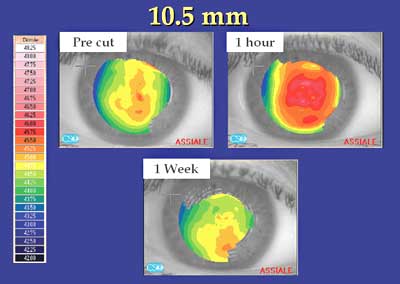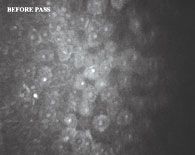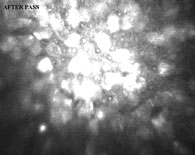Microkeratome applanation significantly affects predictability of custom LASIK
Treatment plans do not take into account that the preoperative cornea will be significantly changed by the microkeratome cut.
Click Here to Manage Email Alerts
ALICANTE, Spain – Custom LASIK gives unpredictable results with induction of higher-order aberrations because treatment plans do not take into account the morphological, histological and biomechanical changes of the cornea induced by the microkeratome cut, according to one surgeon.
“Our customized treatments are based on preoperative topography and wavefront maps. But the LASIK flap induces so many changes that the cornea on which we are doing the ablation is a completely different target from the one we had seen initially,” said Paolo Vinciguerra, MD, at the Alicante Refractive International meeting here.
The effects on corneal biomechanics
According to Dr. Vinciguerra, recent studies have demonstrated that the surgeon has little control over the size and thickness of the flap.
“An unpredictable flap necessarily leads to an unpredictable treatment area,” Dr. Vinciguerra said.
Significant alterations can also be induced by the healing process and by flap complications such as striae.
Less obvious, but highly significant, are the changes that the microkeratome cut induces to corneal biomechanics.
The cutting of a central flap causes a relaxation and retraction of the elastic corneal tissue at the periphery, leading to significant curvature changes and aberrations. This effect is inversely proportional to the size of the flap, Dr. Vinciguerra pointed out.
Corneal refraction and aberrations remain unstable for at least 2 weeks after the procedure.
In a study, Dr. Vinciguerra analyzed the biomechanical effects of microkeratome cuts using daily corneal topography. One hour after flap were created, significant changes were visible compared to preoperative maps.
“Within 1 hour, a difference of 1 D to 2 D was visible in all cases, and further changes took place within the following week. In this study, we performed the laser treatment when differential maps showed a stable corneal pattern compared with the previous day, using the Nidek EC5000. If we had planned our treatment on the preoperative map, we would have operated on a cornea that was no longer the same,” he said.
|
|
|
Images: Vinciguerra P |
Histological and aberrometric changes
A confocal microscopy study also demonstrated that the microkeratome cut produces unpredictable flap thickness and equally unpredictable histological changes.
Flap thickness ranged between 114 µm and 205 µm, with a mean variation of 30 µm.
On the epithelial level, confocal microscopy showed remarkable cell lesions, with hyper-reflective features, in some cases reaching down to the basal lamina. Other images showed a shady, edematous, hyper-reflective stroma and visible damage to the endothelial cells.
Wavefront analysis also demonstrated significant changes in the type and quantity of aberrations produced by the LASIK flap.
In one patient, the comparison between aberrometry before and after a 9.5-mm LASIK cut showed a completely different cornea, with remarkable changes in the astigmatism and induction of spherical aberration, coma and total higher-order aberrations.
“If we want to improve our LASIK outcomes, we should really move to a two-step surgery, first making the flap, and then taking the measurements and doing the ablation at a later stage,” Dr. Vinciguerra said.
A faster and easier solution is, in his opinion, “moving to surface ablation.”
For more information:
- Paolo Vinciguerra, MD, can be reached at Istituto Clinico Humanitas, Milan, Italy; e-mail: info@vincieye.it
- Michela Cimberle is an OSN Correspondent based in Treviso, Italy, who covers all aspects of ophthalmology. She focuses geographically on Europe.



